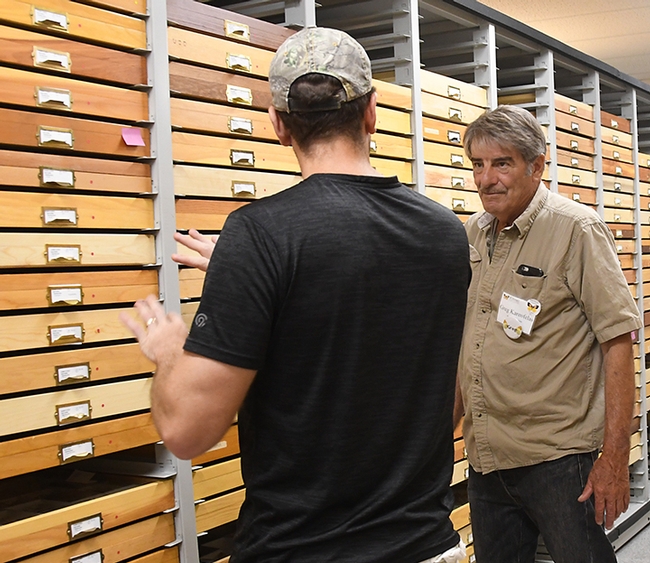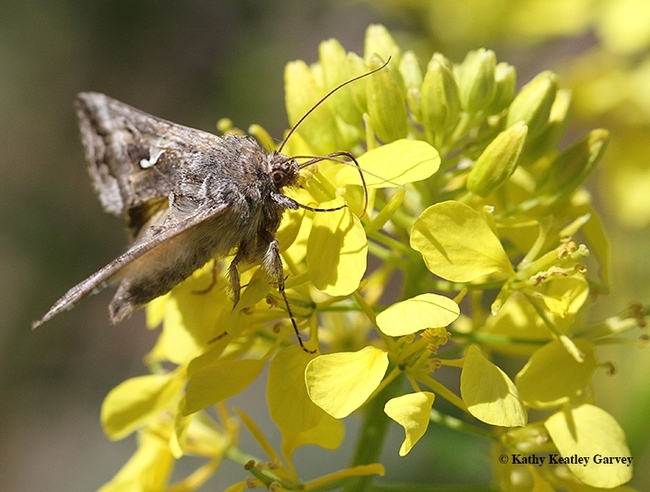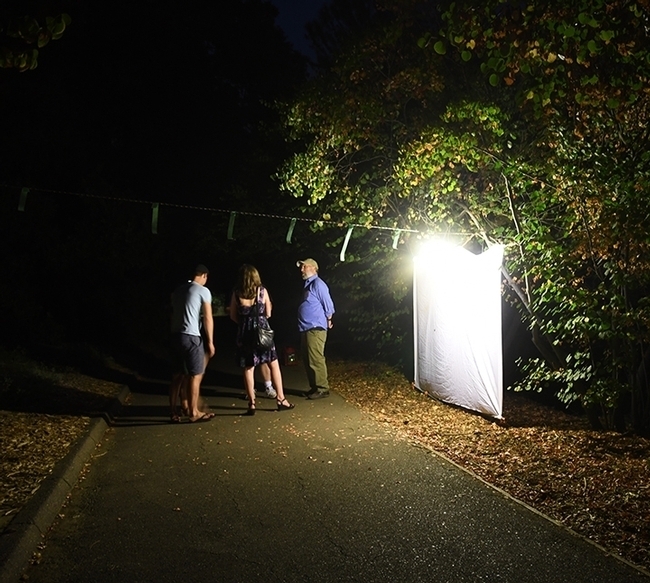
A reader asked: "A friend was just telling me that butterflies and moths land differently. She couldn't remember if it was a moth that landed with its wings up or down. It looks like they land with their wings down. Am I right?"
We asked three experts affiliated with the University of California, Davis, for their responses.
Art Shapiro, UC Davis distinguished professor of evolution and ecology, commented: "There are moths that hold the wings erect over the back like butterflies, and butterflies that hold them out at the sides like moths. Life can be confusing."
Entomologist Jeff Smith, who curates the Lepidoptera collection at the Bohart Museum of Entomology, UC Davis, said: "It depends on the kind of moth or butterfly. Some species/genera of moths will rest with wings folded vertically over them and some rest with wings folded flat over the abdomen. Same with butterflies, and some of this may depend on which surface they want to expose to dangers around them. For example, anglewing butterflies (Polygonia) have great bark-like colors on the ventral surface and they rest with wings over the body so they blend in with the bark of trees that they choose to land on. Buckeye butterflies most often expose the upper surfaces which have the large eyespots that may deter predators. So, not a good rule of thumb."
Bohart Museum associate Greg Kareofelas commented: "Some moths land flat against the substrate, but others can land with their wings closed over their back, depends on the situation sometimes. Some butterflies land with their wings closed, then open them, etc., etc. I think every possibility is possible."
The Bohart Museum, located in Room 1124 of the Academic Surge Building on Crocker Lane, is temporarily closed due to COVID-19 pandemic precautions. However, it is usually open to the public four days a week and it traditionally hosts open houses throughout the year, including a Moth Night that features moth displays and blacklighting. John "Moth Man" De Benedictus, senior museum scientist Steve Heydon and colleagues set up a blacklighting system, comprised of a UC-lit white sheet, in the UC Davis Arboretum and Public Garden.
Home of nearly eight million insects, the Bohart Museum also includes a year-around gift shop (now online) and a live "petting zoo," comprised of Madagascar hissing cockroaches, stick insects and tarantulas. UC Davis distinguished entomology professor Lynn Kimsey serves as the director.
(Editor's Note: Check out the moth and other videos on the Bohart Museum website)
Attached Images:

An alfalfa looper moth, Autographa californica, foraging on mustard. Moth identified by Art Shapiro of UC Davis. (Photo by Kathy Keatley Garvey)

John "Moth Man" De Benedictus (far right) shows visitors the blacklighting system at a Bohart Museum Moth Night. (Photo by Kathy Keatley Garvey)

Entomologist Jeff Smith (center) discusses the difference between moths and butterflies at a Bohart Moth Night. (Photo by Kathy Keatley Garvey)